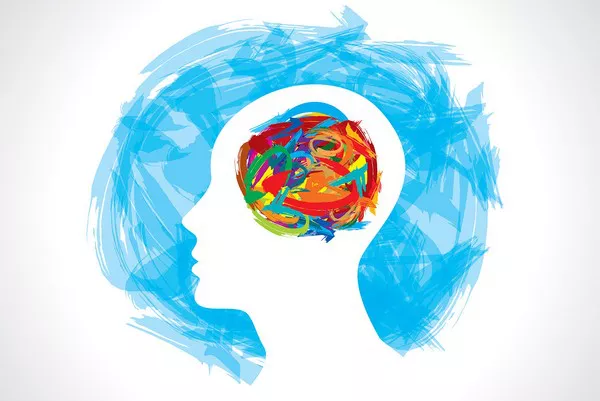Hallucinations, defined as the perception of objects, events, or sensations that do not exist outside of an individual’s mind, are a complex and multifaceted phenomenon that can manifest in a variety of mental illnesses. These experiences can be profoundly distressing and significantly impact an individual’s quality of life. In this comprehensive article, we will explore the various mental health conditions that can give rise to hallucinations, delve into the underlying mechanisms, and discuss the importance of accurate diagnosis and treatment.
The Many Faces of Hallucinations
Hallucinations can take on many forms, including:
Auditory Hallucinations: The experience of hearing voices or sounds that are not present.
Visual Hallucinations: Seeing images or objects that are not real.
Tactile Hallucinations: Feeling sensations on the skin that are not caused by physical touch.
Olfactory Hallucinations: Perceiving smells that are not actually there.
Gustatory Hallucinations: Experiencing tastes that are not associated with any physical substance.
10 Mental Illnesses Associated with Hallucinations
1. Schizophrenia: Schizophrenia is a severe mental disorder characterized by a range of symptoms, including hallucinations. These are often auditory, with individuals reporting hearing voices that can be critical, commanding, or discussing them. The exact cause of schizophrenia is unknown, but it is believed to involve a combination of genetic, biochemical, and environmental factors.
2. Schizoaffective Disorder: Schizoaffective disorder is similar to schizophrenia but also includes significant mood symptoms such as depression or mania. Hallucinations can be a prominent feature, and the individual may experience a blend of psychotic and mood-related symptoms.
3. Bipolar Disorder: In the manic or depressive phases of bipolar disorder, individuals may experience hallucinations. These are more likely to occur during severe episodes and can contribute to the disorganized thinking and behavior characteristic of the condition.
4. Major Depressive Disorder with Psychotic Features: While less common, hallucinations can occur in individuals with major depressive disorder, particularly in severe cases known as psychotic depression. The hallucinations can be auditory, visual, or tactile and are often related to themes of guilt or self-blame.
5. Alzheimer’s Disease and Other Dementias: As cognitive function declines in Alzheimer’s and other forms of dementia, hallucinations can occur, often visual in nature. This is thought to be due to the brain’s compensatory responses to sensory deprivation or the misinterpretation of internal mental images as external reality.
6. Substance-Induced Psychotic Disorders: Hallucinations can be induced by substance use, including alcohol, drugs, or medications. These can occur during intoxication or withdrawal and are often reversible once the substance is cleared from the system.
7. Charles Bonnet Syndrome: In individuals with impaired vision, Charles Bonnet Syndrome can cause complex visual hallucinations. This is believed to result from the brain’s attempt to compensate for the lack of visual input.
8. Parkinson’s Disease: Hallucinations can occur in advanced stages of Parkinson’s disease and are often related to visual perceptions. The use of dopamine agonists, which are medications that increase dopamine levels in the brain, can also contribute to the occurrence of hallucinations.
9. Epilepsy: In some cases, individuals with epilepsy may experience hallucinations, particularly those with temporal lobe epilepsy. These can occur during a seizure or in the period leading up to or following a seizure.
10. Post-Traumatic Stress Disorder (PTSD): While not a typical feature of PTSD, some individuals may experience hallucinations related to their traumatic experiences, particularly if there is comorbidity with other mental health conditions.
Understanding the Underlying Mechanisms
The mechanisms behind hallucinations are not fully understood but are thought to involve:
Abnormal Neurotransmitter Activity: An imbalance in neurotransmitters, such as dopamine, serotonin, and glutamate, has been implicated in the occurrence of hallucinations.
Brain Pathology: Structural or functional changes in the brain, particularly in areas associated with sensory processing and perception, can lead to hallucinations.
Cognitive Factors: Certain cognitive processes, such as the inability to filter out irrelevant stimuli or the misattribution of internal thoughts as external perceptions, can contribute to the experience of hallucinations.
Psychological Factors: Psychological factors, such as high levels of stress, anxiety, or trauma, can also play a role in the development of hallucinations.
Diagnosis and Treatment
Accurate diagnosis is crucial for the effective treatment of hallucinations. A thorough psychiatric evaluation, including a detailed history, mental status examination, and possibly neuroimaging or laboratory tests, can help determine the underlying cause.
Treatment approaches may include
Pharmacological Interventions: Medications can be prescribed to manage hallucinations, often targeting the neurotransmitter imbalances thought to contribute to their occurrence.
Psychotherapy: Psychotherapeutic approaches, such as cognitive-behavioral therapy (CBT), can help individuals develop coping strategies for dealing with hallucinations and address any underlying psychological issues.
Social Support: Social support and understanding from family and friends can be invaluable in helping individuals cope with the distress caused by hallucinations.
Lifestyle Modifications: Making certain lifestyle changes, such as improving sleep hygiene, reducing stress, and avoiding substances that can exacerbate hallucinations, can also be beneficial.
Conclusion
Hallucinations are a complex symptom that can arise from a variety of mental illnesses. Understanding the different conditions that can cause hallucinations, the underlying mechanisms, and the importance of accurate diagnosis and treatment is crucial for providing effective care to those who experience them. By shedding light on this often misunderstood symptom, we can work towards reducing the stigma surrounding mental illness and improving outcomes for those affected.
Related Topics:

